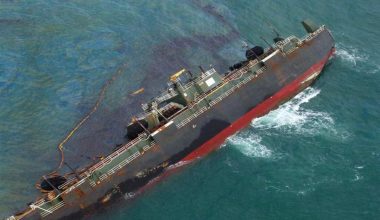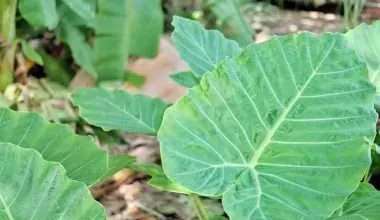Table of Contents Show
What is Deforestation?
Deforestation is a term used for describing the process of clearing forested areas via cutting down and burning trees. This phenomenon has been increasing at a tremendous speed these days to match our hunger for space. Unfortunately, it has never been enough due to growing population and advancing technologies that require new constructions and raw materials.
The last century has seen 70% of the green cover vanish and it is deemed to continue in this direction for the foreseeable future. United Nations have stated that approximately 18 million acres of forests are lost every year with the trends increasing in recent times.
The Guardian, in 2018, reported that an area of forest nearly equivalent to a football field is lost every single second.
So Why do we cut trees? Read up ahead!
Causes of Deforestation
To understand deforestation, we must first delve into the reasons that have made us so lethal to trees.
To free-up space
The oldest and first reason that play a pivotal role is our hunger, in literal means. We clear forests to make enough space available for agriculture and grazing. The rising demand for agriculture is the rising demand of food, which brings us to the next point.
Rising Populations
With the rapidly rising population trends the demand for food has been through the roof and we are racing to meet those by clearing more forests. Over 40% of the forest cover is removed just to make more space available for crops.
Forest Fires
Natural fires in forests are no doubt very intense but are very rare. Instead it is these human made fires which we commonly hear about that are now used to quickly clear out huge chunks of land for agricultural use. The process starts with growing and harvesting timber initially, that is then used mainly by construction and paper industry, and then burning the left vegetations to clear out space for crops or animal grazing.
These fires have unprecedented effect of getting out of control which happened recently in Brazil, where human-lit fires skyrocketed and caused detrimental damage to nearby forests. Latest reports state that around 100,000 fires have burned in the Amazon (also called Earth’s lungs), an increase of 80% from last year.
Urbanization
As the population grows not only is food need to fulfill their needs, there is also a need for housing and with housing comes the basic utilities and industries. Also roads are built to create access. All of this requires space which is freed up by cutting down trees. This urbanization has been driving the changes in the forest patterns since quite some time now.
Mineral Resources
Usually densely forested areas have huge mineral resources ,such as fossil fuels, which is another huge factor increasing pressure on the limited natural forest lands. These mineral resources are especially needed to fulfill increasing fuels demands.
Fuel Demand
With increasing fuel demands of the population many industries have employed the use of illegal logging to supply substantial amounts of wood for its wide uses especially as a fuel. These logging sites themselves require clearing of land as a prerequisite to make space for bulky vehicles which can then transport wood.
Although it has been countered that logging only destroys some specific trees leaving out others, but the fact remains that forest canopy is very important for the ecosystem as it houses animals, protects plants and insect population, and protects the forest floor, and removing even a single tree can disrupt the canopy.
This brings us to most devastating Effects of Deforestation.
Effects of Deforestation
Biodiversity is threatened by the loss of the forest cover, which in turn affects our lives. Forest shrinkage creates widespread problems such as soil erosion, reduction in crops, droughts, floods, climate change and loss of species.
Degradation and Extinction of Species
Forests are a home to almost 80% of terrestrial biodiversity, which includes extensive list of different species of trees, plants, animals and microbes. Loosing forests means losing entire species and every species is dependent on some other specie to make a sustainable ecosystem thus this has far reaching effects in the long run.
According to a recent study, about 137 species of animals are lost every day because their homes or habitats are being destroyed. Some of the species that have been extinct due to our carelessness are White-cheeked spider monkeys, giant otter, Orangutans, giant pandas, rhinos, and the Asian elephant. A more recent study has warned that if we continue our current practices then up to 90% of species will be extinct in the next 40 years.
Reduced Rainfall and Increasing Droughts
Deforestation also decreases the water vapor produced over the canopy, which leads to a reduced rainfall. A 2019 study showed that those parts of the rainforest that had already been converted to agricultural land had higher temperatures of soil and air, which has been directly linked to drought. On the other hand, forested lands had about three times higher rates of evapo-transpiration, adding more water vapor to the air.
Climate Change and Global Warming
One of the most important roles of trees in our lives is that of absorbing carbon dioxide from environment, reducing the greenhouse gas emissions produced by our activities. With the current climate changes in play, trees are very crucial for carbon sequestration.
Trees alone can offset many predictions we have regarding climate changes, because deforestation not only removes a carbon trapping thing but also in itself generates a lot of greenhouse gases, which can be seen from the fact that deforestation is the second leading cause of climate change.
Soil Erosion
Trees secure fertile soil, and without this protection there is increased erosion which sweeps away this sacred fertile land into nearby rivers. This not only reduces the ratio of fertile land but also contaminates the water supply thereby decreasing the quality of our drinking water.
Solutions to Deforestation
With the increasing awareness and the new studies showing that the window to act has already started to close, many organizations and countries are racing to prevent the damage and if possible reverse it.
Replantation
The best solution rationally, is to cut down on deforestation to prevent further damage and promote reforestation of trees to restore the damage. Reforestation is basically growing trees where they have been cut down.
Additionally, Afforestation is another good strategy which means planting trees where there have never been. Converting barren lands into forests! Now that’s what I call a challenge.
Environmentbuddy is especially concentrating on planting trees to fight Deforestation, help us win this fight!
Sustainable agriculture practices
There are new sustainable agriculture practices and new varieties of crops that require less amount of lands than conventional methods. This means less trees are cut down to make way for agricultural lands.
Recycling:
With the advent of technology, there is ongoing research into product reusing and recycling. This is absolutely necessary for wood-derived and mineral resources-dependent products.
New Policies
There have been new policies and international agreements to enforce countries to act quickly and harshly against deforestation and climate changes. But the point remains that we need to be more adamant on it, because as we have seen recently some countries back out of the agreements and increasing the disastrous practices.
Remember,
Even the smallest of acts bring about the largest of changes!
Although many people will most likely say that their individual decisions have a very little impact, it is everyone’s responsibility to understand and educate and spread awareness others about the environmental effects of deforestation and change our current practices as much as possible.





